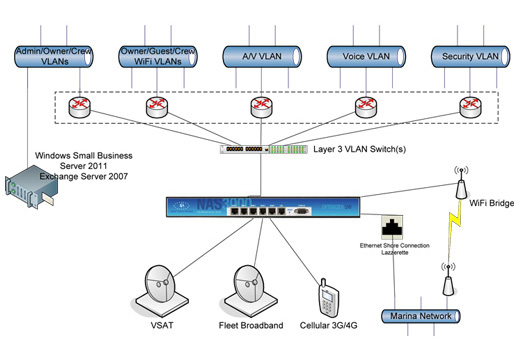Bandwidth management is the process of measuring and controlling the communications (traffic, packets) on a network link, to avoid filling the link to capacity or overfilling the link, which would result in network congestion and poor performance of the network. Bandwidth management is measured in bits per second (bit/s) or bytes per second (B/s).
Bandwidth management mechanisms and techniques
Bandwidth management mechanisms may be used to further engineer performance and includes:
- Traffic shaping (rate limiting):
- Scheduling algorithms:
- Weighted fair queuing (WFQ)
- Class based weighted fair queuing
- Weighted round robin (WRR)
- Deficit weighted round robin (DWRR)
- Hierarchical Fair Service Curve (HFSC)
- Congestion avoidance:
- RED, WRED - Lessens the possibility of port queue buffer tail-drops and this lowers the likelihood of TCP global synchronization
- Policing (marking/dropping the packet in excess of the committed traffic rate and burst size)
- Explicit congestion notification
- Buffer tuning
- Bandwidth reservation protocols / algorithms
- Resource reservation protocol (RSVP)
- Constraint-based Routing Label Distribution Protocol (CR-LDP)
- Top-nodes algorithm
- Traffic classification - categorising traffic according to some policy in order that the above techniques can be applied to each class of traffic differently
Link performance
Issues which may limit the performance of a given link include:
- TCP determines the capacity of a connection by flooding it until packets start being dropped (Slow-start)
- Queueing in routers results in higher latency and jitter as the network approaches (and occasionally exceeds) capacity
- TCP global synchronization when the network reaches capacity results in waste of bandwidth
- Burstiness of web traffic requires spare bandwidth to rapidly accommodate the bursty traffic
- Lack of widespread support for explicit congestion notification and Quality of Service management on the Internet
- Internet Service Providers typically retain control over queue management and quality of service at their end of the link
- Window Shaping allows higher end products to reduce traffic flows, which reduce queue depth and allow more users to share more bandwidth fairly
Tools and techniques
- Packet sniffer
- Network traffic measurement

